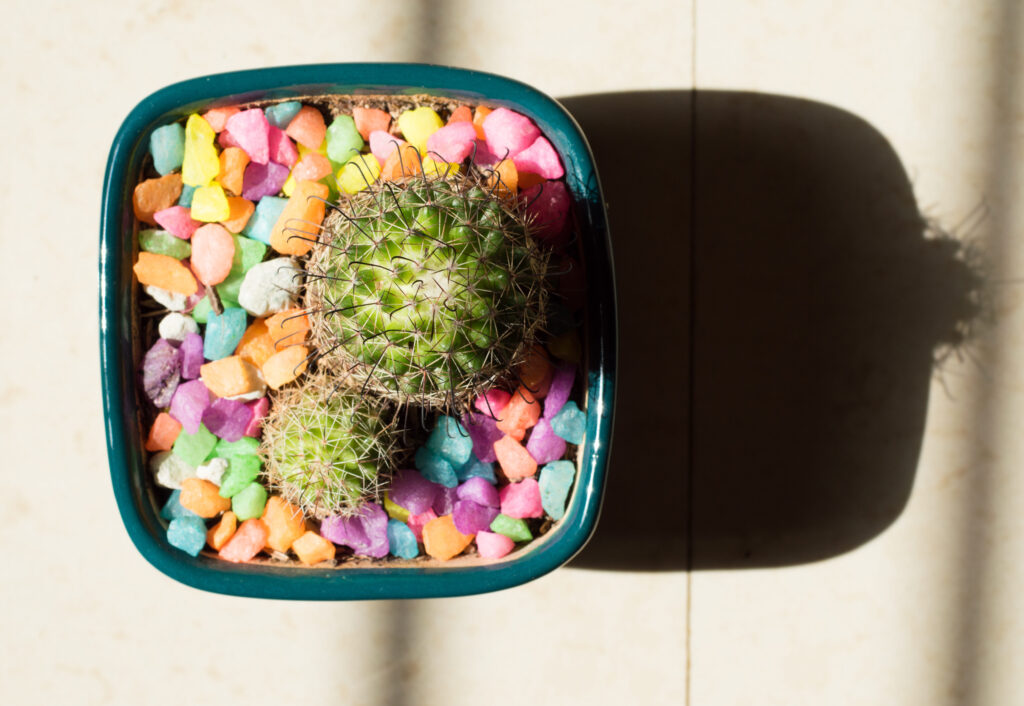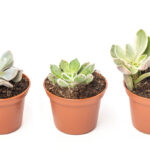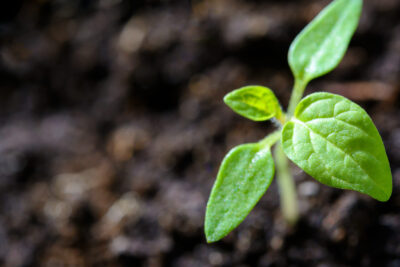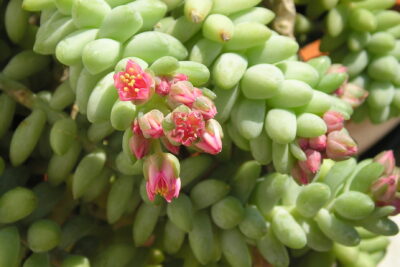
Discover the Diverse Varieties of Succulent Plants Available

Succulent plants have gained immense popularity in recent years due to their unique and eye-catching appearance. These fleshy plants, known for their ability to store water in their leaves and stems, come in a wide range of shapes, sizes, and colors. From the widely recognized aloe vera to the lesser-known lithops, succulents have become a favorite choice for both indoor and outdoor gardening enthusiasts.
We will explore the diverse varieties of succulent plants available, highlighting their distinct characteristics and care requirements. We will delve into the different types of succulents, including popular choices like echeverias, haworthias, and sedums, as well as more unusual species such as crassulas and kalanchoes. Additionally, we will discuss the various ways to propagate and care for succulents, ensuring that you have all the necessary information to nurture these resilient plants and create your own succulent oasis.
- Explore different types of succulent plants to find the perfect one for your collection
- Research online to learn about the wide range of succulent species and their unique characteristics
- Visit local nurseries or garden centers to see a variety of succulent plants in person
- Attend succulent plant shows or exhibitions to discover rare and unusual varieties
- Join online succulent plant communities to connect with fellow enthusiasts and learn about new varieties
- Experiment with propagating succulents to grow your own diverse collection
- Purchase succulent plants from reputable sellers to ensure quality and variety
- Consult gardening books or websites for detailed information on different succulent plant species
- Frequently Asked Questions
Explore different types of succulent plants to find the perfect one for your collection
Succulent plants are a popular choice among plant enthusiasts due to their unique and eye-catching appearance, as well as their ability to thrive in various environmental conditions. With their thick and fleshy leaves, succulents have adapted to store water, making them low-maintenance and drought-tolerant plants.
If you're looking to add some variety to your succulent collection, you'll be pleased to know that there are numerous types of succulent plants available. From the classic and well-known varieties to the more rare and unusual ones, there is a succulent plant to suit every taste and preference.
1. Echeveria
Echeverias are one of the most popular types of succulents, known for their rosette-shaped foliage and vibrant colors. These plants come in a wide range of shapes and sizes, from small and compact to large and sprawling. Echeverias are perfect for both indoor and outdoor settings and are relatively easy to care for.
2. Haworthia
Haworthias are small succulent plants that are often characterized by their striking geometric patterns and distinctive window-like leaves. These plants are known for their tolerance to low light conditions, making them ideal for indoor settings. Haworthias are great for adding a touch of elegance to any space.
3. Sedum
Sedums, also known as stonecrops, are versatile succulents that come in a wide variety of shapes, sizes, and colors. These plants are known for their ability to spread and cascade, making them great for hanging baskets or ground cover. Sedums are relatively low-maintenance and can withstand harsh weather conditions.
 Discover Native African Succulents: Diverse & Hardy Garden Species!
Discover Native African Succulents: Diverse & Hardy Garden Species!4. Aloe
Aloes are well-known for their medicinal properties and are often used in skincare products. These succulents have long, fleshy leaves and are known for their ability to store water. Aloes come in various sizes and shapes, with some species producing vibrant flowers. These plants thrive in bright, indirect light and require minimal watering.
5. Crassula
Crassulas, also known as jade plants, are popular succulents with thick, shiny leaves. These plants are known for their longevity and are often passed down through generations. Crassulas are easy to care for and can be grown both indoors and outdoors. They make excellent additions to any succulent collection.
With the wide variety of succulent plants available, there is no shortage of options to choose from. Whether you prefer the elegant and intricate patterns of Haworthias or the vibrant colors of Echeverias, there is a succulent plant out there that will captivate you. So, go ahead and explore the diverse world of succulents to find the perfect addition to your collection!
Research online to learn about the wide range of succulent species and their unique characteristics
When it comes to succulent plants, there is truly a vast array of species to explore. These unique and beautiful plants come in various shapes, sizes, and colors, making them a favorite among plant enthusiasts around the world.
Whether you are a seasoned succulent lover or just starting your journey into the world of these fascinating plants, it's essential to research and learn about the diverse varieties available. By doing so, you can discover the perfect succulents that match your preferences and care abilities.
Exploring Different Types of Succulents
One way to dive into the world of succulents is by exploring the different types of species. From the popular Echeveria and Aloe to the lesser-known Haworthia and Sedum, each succulent variety has its own unique characteristics and care requirements.
 Low-Maintenance Succulents: Finding the Least Demanding Varieties
Low-Maintenance Succulents: Finding the Least Demanding Varieties- Echeveria: Recognized for their rosette-shaped leaves and vibrant colors, Echeverias are a favorite choice among succulent enthusiasts. They come in various sizes and can be found in hues of green, pink, purple, and even blue.
- Aloe: Aloe plants are not only known for their attractive spiky leaves but also for their healing properties. These succulents are easy to care for and can thrive both indoors and outdoors.
- Haworthia: If you prefer smaller succulents with interesting patterns, Haworthias are a great option. These plants have distinctive window-like markings on their leaves and are perfect for adding a touch of uniqueness to your collection.
- Sedum: Sedums, also known as stonecrops, are incredibly versatile succulents. They come in various shapes and sizes and are famous for their ability to thrive in challenging conditions, making them a popular choice for outdoor gardens.
These are just a few examples of the vast range of succulent varieties available. By researching and exploring different types, you can find the ones that resonate with your personal style and preferences.
Consider Care Requirements
When delving into the world of succulents, it's crucial to consider their care requirements. While most succulents are known for their ability to withstand drought-like conditions, each species has its own specific needs.
- Light: Some succulents thrive in bright, direct sunlight, while others prefer indirect or filtered light. Understanding the lighting requirements of different succulents will help you provide the ideal environment for their growth.
- Watering: Succulents have unique water storage abilities, allowing them to survive in arid conditions. However, overwatering can be detrimental to their health. It's essential to learn about the watering needs of each succulent variety to prevent root rot and other moisture-related issues.
- Soil and Potting: Succulents require well-draining soil to prevent waterlogged roots. Choosing the right potting mix and ensuring proper drainage is crucial for their overall health and growth.
- Temperature and Climate: Consider the temperature and climate conditions in your region when selecting succulents. Some varieties thrive in hot and dry climates, while others prefer cooler temperatures.
By understanding the care requirements of different succulent species, you can create an environment that fosters their growth and longevity.
So, whether you're a beginner or a seasoned succulent enthusiast, take the time to research and explore the vast range of succulent varieties available. Discover their unique characteristics and care requirements to build a diverse and thriving succulent collection that will bring beauty and joy to your space.
Visit local nurseries or garden centers to see a variety of succulent plants in person
If you are interested in exploring the world of succulent plants, a great way to start is by visiting local nurseries or garden centers. These places often have a wide selection of succulents on display, allowing you to see the diverse range of colors, shapes, and sizes these plants come in.
When you visit a nursery or garden center, take your time to walk around and examine the different types of succulents available. Look for unique varieties that catch your eye, such as the popular Echeveria or the striking Aloe Vera. Take note of the different textures and patterns on the leaves, as well as the various growth habits of the plants.
 Discover Diverse Succulents with Branching Growth Patterns
Discover Diverse Succulents with Branching Growth PatternsAs you explore, don't hesitate to ask the staff for assistance or guidance. They are usually knowledgeable about succulents and can provide valuable information about care and maintenance. They may even be able to recommend specific varieties that are well-suited for your local climate or your personal preferences.
Remember to keep an eye out for any signs or labels that provide additional details about the succulents. These can include information about the plant's water and sunlight requirements, its growth rate, and any special care instructions.
By visiting local nurseries or garden centers, you not only get to see the diverse array of succulent plants available, but you also have the opportunity to bring home some new additions to your own succulent collection. So, grab your gardening gloves and embark on an exciting journey to discover the captivating world of succulents!
Attend succulent plant shows or exhibitions to discover rare and unusual varieties
Why Attend Succulent Plant Shows or Exhibitions?
Attending succulent plant shows or exhibitions is a wonderful way to explore and discover the vast array of rare and unusual succulent varieties that exist in the world. These events bring together avid succulent enthusiasts, growers, and sellers, creating a vibrant and knowledgeable community.
Exploring Rare and Unusual Varieties
At these shows, you will have the opportunity to witness a stunning display of succulent plants from all corners of the globe. From the popular and commonly found varieties to the rare and elusive ones, there is something for everyone's taste.
Imagine being surrounded by a sea of vibrant colors, unique shapes, and textures that only succulents can offer. It's an experience that will leave you in awe and inspire you to dive deeper into the captivating world of succulent plants.
 Discover the Stunning Succulent Plants with Rainbow-Colored Leaves
Discover the Stunning Succulent Plants with Rainbow-Colored LeavesMeeting Experts and Growers
One of the greatest advantages of attending succulent plant shows or exhibitions is the chance to meet and learn from experts and experienced growers. These individuals have a wealth of knowledge when it comes to caring for succulents and can offer valuable advice on cultivation techniques, propagation methods, and more.
Engaging in conversations with these knowledgeable individuals can help you gain a deeper understanding of succulents and enhance your own gardening skills. You can ask questions, seek recommendations, and even receive guidance on specific succulent varieties you are interested in.
Purchase Rare and Unique Succulents
Aside from the educational aspect, succulent plant shows and exhibitions also offer a fantastic opportunity to expand your own succulent collection. Many vendors and growers set up booths at these events, offering a wide range of rare and unique succulent plants for sale.
Whether you are on the lookout for a particular variety or simply want to add some new and exciting plants to your collection, these shows are an ideal place to find what you're looking for. You may stumble upon rare hybrids, limited editions, or even exclusive specimens that are not readily available elsewhere.
Attending succulent plant shows or exhibitions is a must for any succulent enthusiast or aspiring collector. Not only will you have the opportunity to explore a diverse range of rare and unusual succulent varieties, but you will also gain valuable knowledge and connect with fellow enthusiasts in the process.
So mark your calendars, prepare your questions, and get ready to immerse yourself in the captivating world of succulent plants at the next succulent plant show or exhibition near you!
Join online succulent plant communities to connect with fellow enthusiasts and learn about new varieties
 Exploring the Diversity: Succulents in Mixed Genus Categories
Exploring the Diversity: Succulents in Mixed Genus CategoriesExplore the World of Succulents
If you are a succulent lover, you know that the world of succulents is vast and diverse. With so many different species and varieties to choose from, it can be overwhelming to navigate through the options on your own. That's where online succulent plant communities come in handy!
By joining these communities, you get the opportunity to connect with fellow succulent enthusiasts from around the world. You can share your own experiences, ask questions, and learn from others who have a passion for these unique plants.
Discover New Varieties
One of the most exciting aspects of joining online succulent plant communities is the chance to discover new varieties. These communities often have members who specialize in rare or lesser-known succulent species. They share their knowledge and expertise, introducing you to plants you may have never encountered before.
Imagine stumbling upon a vibrant Echeveria hybrid with stunning color patterns or a rare Haworthia species that looks like a work of art. These communities provide a platform for members to showcase their collections and introduce others to new and exciting varieties.
Expand Your Knowledge
Being part of an online succulent plant community also allows you to expand your knowledge about succulent care, propagation techniques, and general plant information. Members often share tips and tricks for keeping your succulents happy and healthy, as well as troubleshooting common issues that may arise.
Whether you are a beginner or an experienced succulent enthusiast, there is always something new to learn. These communities foster a culture of knowledge-sharing, where members can support each other in their succulent journeys.
Build Lasting Connections
Aside from the educational benefits, online succulent plant communities also provide a platform for building lasting connections with like-minded individuals. You can make friends who share your love for succulents and create a network of fellow enthusiasts who understand your excitement when you acquire a new plant or successfully propagate a rare variety.
 Exploring the Possibility: Can Succulents Really Have Black Flowers?
Exploring the Possibility: Can Succulents Really Have Black Flowers?These connections extend beyond the virtual realm as well. Many communities organize local meetups, plant swaps, and even succulent-themed events. These gatherings give you the opportunity to meet your online friends in person, exchange plants, and further deepen your love for succulents together.
Joining online succulent plant communities is an excellent way to immerse yourself in the diverse world of succulents. From discovering new varieties to expanding your knowledge and building connections, these communities offer invaluable resources and support for succulent enthusiasts of all levels. So why wait? Join a community today and embark on a journey of succulent exploration!
Experiment with propagating succulents to grow your own diverse collection
One of the most fascinating aspects of succulent plants is their ability to propagate easily. Whether you are a seasoned succulent enthusiast or just starting your collection, propagating succulents is a great way to expand your assortment and create a diverse array of plants.
Propagation refers to the process of growing new succulent plants from cuttings, leaves, or offsets. It is a simple yet rewarding technique that allows you to produce multiple plants from a single parent plant.
Types of Succulent Propagation
There are several methods of propagating succulents, each with its unique advantages. Some of the most common techniques include:
- Leaf Cuttings: This method involves removing a leaf from the parent plant and allowing it to develop roots and new growth.
- Stem Cuttings: Stem cuttings involve cutting a portion of the stem and allowing it to root before planting it in its own pot.
- Offsets: Many succulents produce offsets, also known as pups or babies, which can be separated from the parent plant and grown independently.
- Division: Some succulents, such as agaves, can be divided into multiple plants by carefully separating their root systems.
- Grafting: Grafting involves combining different succulent species by attaching a cutting or offset from one plant onto the rootstock of another.
By experimenting with these propagation methods, you can create a diverse collection of succulent plants with various shapes, colors, and textures.
 Unveiling the Leafy Secrets of Succulents: Exploring Their Diversity
Unveiling the Leafy Secrets of Succulents: Exploring Their DiversityBenefits of Propagating Succulents
There are numerous benefits to propagating succulents:
- Cost-effective: Propagating your succulents saves money as you can produce new plants without having to purchase them.
- Expansion of Collection: Propagation allows you to expand your collection rapidly and acquire a wider variety of succulent species.
- Learning Experience: Propagating succulents is a hands-on learning experience that can deepen your understanding of plant growth and development.
- Sharing with Others: Once you have successfully propagated your succulents, you can share the joy of these unique plants with friends and family.
So, why not give succulent propagation a try? It's a fun and rewarding activity that will not only add diversity to your collection but also deepen your appreciation for these stunning plants.
Purchase succulent plants from reputable sellers to ensure quality and variety
When it comes to adding greenery to your home or garden, succulent plants are a popular choice. Known for their ability to thrive in various environments and their unique, eye-catching forms, succulents have gained immense popularity among plant enthusiasts.
However, not all succulent plants are created equal. The market is flooded with options, and it can be overwhelming to decide which varieties to choose. That's why it's essential to purchase succulent plants from reputable sellers who can offer both quality and variety.
Quality plants for a thriving succulent collection
Reputable sellers of succulent plants prioritize the quality of their offerings. They ensure that the plants are healthy, disease-free, and well-cared for. By purchasing from these sellers, you can rest assured that you are bringing home robust and vibrant succulents that are more likely to thrive in your care.
High-quality succulents not only have a better chance of surviving, but they also tend to exhibit more vibrant colors and interesting textures. Whether you are a seasoned succulent enthusiast or just starting your collection, investing in quality plants will enhance the overall beauty of your space.
 Best Low-Light Cactus & Succulents for Indoor Spaces
Best Low-Light Cactus & Succulents for Indoor SpacesA wide variety of succulent species to choose from
One of the joys of succulent gardening is the vast array of species available. Reputable sellers often offer a wide variety of succulent plants, allowing you to explore different forms, colors, and sizes. From the popular Echeveria and Aloe Vera to lesser-known varieties like Haworthia and Sedum, there is something for every succulent lover.
Having access to a diverse selection of succulent plants enables you to create stunning arrangements and experiment with different combinations. Whether you prefer a minimalist look with uniform rosettes or a more eclectic mix of textures and shapes, a reputable seller will have the variety to fulfill your creative vision.
Expert advice and customer support
Another advantage of purchasing succulent plants from reputable sellers is the availability of expert advice and customer support. These sellers are often knowledgeable about various succulent species and can provide valuable insights on care, propagation, and troubleshooting. They understand the unique needs of different succulents and can guide you in creating the ideal growing conditions for your plants.
In addition, reputable sellers typically offer excellent customer support. They are willing to address any queries or concerns you may have, ensuring a smooth and satisfactory purchasing experience. Whether you're a beginner or an experienced gardener, having access to reliable guidance can make all the difference in successfully cultivating and enjoying your succulent collection.
So, the next time you're considering adding succulent plants to your space, remember the importance of purchasing from reputable sellers. By doing so, you'll not only acquire high-quality plants but also have access to a diverse selection and expert advice. Start exploring the world of succulents today and discover the endless possibilities they offer for enhancing your indoor or outdoor environment.
Consult gardening books or websites for detailed information on different succulent plant species
Why Succulent Plants are So Popular
Succulent plants have gained immense popularity in recent years due to their unique and eye-catching appearance. These plants feature thick and fleshy leaves, stems, or roots that store water, making them highly adaptable to arid conditions. Their ability to thrive in various environments, coupled with their low maintenance requirements, has made them a favorite among both experienced and novice gardeners.
Exploring the World of Succulent Plants
There are countless varieties of succulent plants available, each with its own distinct characteristics. From the spiky Aloe Vera to the rosette-shaped Echeveria, succulents come in a wide range of shapes, sizes, and colors. Some species even produce vibrant flowers, adding an extra splash of color to your garden or indoor space.
 Exploring Succulents: Discovering Flower-Like Varieties
Exploring Succulents: Discovering Flower-Like VarietiesPopular Succulent Plant Species
Here are some well-known succulent plant species that are worth considering for your collection:
- Echeveria: Known for their rosette-shaped leaves and vibrant colors, Echeverias are popular choices for indoor and outdoor gardens.
- Sedum: With their diverse forms and colors, Sedums are versatile succulents that can be planted in containers, rock gardens, or as ground cover.
- Haworthia: These small succulents have fascinating geometric patterns on their leaves, making them intriguing additions to any collection.
- Agave: Agaves are large and striking succulents that make a bold statement in any landscape with their architectural forms.
- Aloe Vera: Apart from its medicinal properties, Aloe Vera is a popular succulent due to its spiky leaves and ability to thrive in a wide range of conditions.
Caring for Succulent Plants
While succulent plants are known for their resilience and ability to tolerate neglect, they still require some care to thrive. Here are a few essential tips:
- Well-draining soil: Succulents prefer soil that drains well to prevent root rot. Use a sandy or gritty soil mix specifically formulated for succulents.
- Watering: Allow the soil to dry out completely between waterings. Overwatering can lead to root rot, while underwatering can cause the plant to become dehydrated.
- Sunlight: Most succulents thrive in bright sunlight. Place them in a location where they can receive at least six hours of direct sunlight each day.
- Temperature: Succulents generally prefer warm temperatures but can tolerate mild frost. Protect them from extreme cold or heat.
By understanding the diverse varieties of succulent plants available and providing them with the proper care, you can create a stunning and low-maintenance succulent garden that will be the envy of your friends and neighbors.
Frequently Asked Questions
1. What are succulent plants?
Succulent plants are plants that have thick, fleshy leaves, stems, or roots, which store water. They are known for their ability to thrive in arid conditions.
2. Do succulent plants require a lot of water?
No, succulent plants are adapted to survive in dry environments and have the ability to store water. They generally require less water compared to other types of plants.
3. Can succulent plants be grown indoors?
Yes, many succulent plants can be grown indoors. They require bright, indirect sunlight and well-draining soil. Indoor succulents are a popular choice for houseplants.
4. What are some popular types of succulent plants?
Some popular types of succulent plants include Echeveria, Aloe vera, Haworthia, Sedum, and Crassula. These varieties come in a wide range of shapes, colors, and sizes.
A Guide to the Most Common Types of Succulents and Care TipsIf you want to read more articles similar to Discover the Diverse Varieties of Succulent Plants Available, you can visit the Varieties and Colors category.






You Must Read